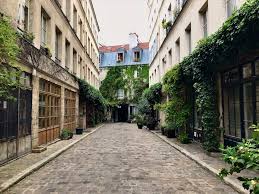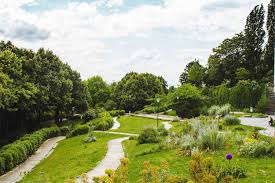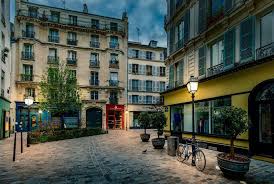Exploring Paris: A Guide to its Diverse Neighborhoods
Paris, the City of Light, is renowned for its rich history, vibrant culture, and diverse neighborhoods, each offering its own unique charm. Navigating the city becomes more enjoyable with a good understanding of its various districts. This article will serve as a guide to the Paris neighborhood map, highlighting key areas and what makes them special.
The Arrondissements: A Spiral of Diversity
Paris is divided into 20 arrondissements, or administrative districts, which spiral outwards from the city center. Each arrondissement has its own character and attractions, making Paris a mosaic of distinct experiences.
1st Arrondissement: Louvre
The 1st arrondissement is home to some of Paris’ most famous landmarks, including the Louvre Museum and the Palais Royal. This central area is characterized by its historic architecture, luxury boutiques, and cultural richness.
2nd Arrondissement: Bourse
Known as the financial district, the 2nd arrondissement houses the Paris Bourse (stock exchange) and numerous corporate offices. It’s also home to vibrant streets like Rue Montorgueil, which is bustling with markets, cafes, and restaurants.
3rd and 4th Arrondissements: Le Marais
Le Marais spans the 3rd and 4th arrondissements and is one of Paris’ oldest quarters. Known for its narrow medieval streets, historic buildings, and thriving LGBTQ+ scene, Le Marais is a hub for art galleries, museums, and trendy boutiques.
5th Arrondissement: Latin Quarter
The Latin Quarter, situated in the 5th arrondissement, is famous for its student life, with the Sorbonne University at its heart. This intellectual enclave is also rich in history, boasting landmarks like the Pantheon and the Botanical Garden.
6th Arrondissement: Saint-Germain-des-Prés
Saint-Germain-des-Prés, in the 6th arrondissement, is synonymous with Parisian café culture and intellectualism. Frequented by famous writers and philosophers like Jean-Paul Sartre and Simone de Beauvoir, this area is also known for its high-end shops and art galleries.
7th Arrondissement: Eiffel Tower
The 7th arrondissement is where you’ll find the iconic Eiffel Tower. This upscale district is also home to the Musée d’Orsay, Les Invalides, and numerous government buildings. It’s a sophisticated area with elegant streets and luxurious residences.
8th Arrondissement: Champs-Élysées
The 8th arrondissement includes the famed Champs-Élysées avenue, known for its theaters, cafes, and luxury shops. This district also encompasses the Arc de Triomphe and the Place de la Concorde, blending grandeur with commercial vibrancy.
9th Arrondissement: Opéra
The 9th arrondissement is characterized by its opulent opera houses, like the Palais Garnier. It’s also a shopping haven, with the Galeries Lafayette and Printemps department stores. This area mixes cultural landmarks with bustling retail activity.
10th Arrondissement: Canal Saint-Martin
The 10th arrondissement, known for the picturesque Canal Saint-Martin, is a trendy area popular with young Parisians. This district has a bohemian vibe, with hip bars, cafes, and boutique shops lining the canal.
11th Arrondissement: Bastille

The 11th arrondissement is known for its vibrant nightlife and historical significance. The Place de la Bastille, a symbol of the French Revolution, anchors this lively district filled with bars, clubs, and diverse restaurants.
12th Arrondissement: Reuilly
The 12th arrondissement features the expansive Bois de Vincennes park, offering a green escape within the city. It’s a residential area with a mix of modern developments and traditional Parisian charm.
13th Arrondissement: Chinatown
The 13th arrondissement is notable for its large Asian community, particularly around the Chinatown district. It’s also home to modern architecture, such as the Bibliothèque Nationale de France, and street art in the Butte-aux-Cailles neighborhood.
14th Arrondissement: Montparnasse
Montparnasse, in the 14th arrondissement, has a rich artistic history, once attracting artists like Picasso and Hemingway. Today, it’s known for the Montparnasse Tower, bustling cafes, and the historic Catacombs of Paris.
15th Arrondissement: Vaugirard
The 15th arrondissement, the largest in Paris, is primarily residential but features attractions like the Parc André Citroën and the Paris Expo Porte de Versailles. It’s a quieter area, ideal for experiencing everyday Parisian life.
16th Arrondissement: Passy
The 16th arrondissement is an affluent residential area with a serene atmosphere. It’s home to the Trocadéro, offering stunning views of the Eiffel Tower, and the Bois de Boulogne, a vast public park.
17th Arrondissement: Batignolles-Monceau
The 17th arrondissement is diverse, encompassing the bourgeois neighborhoods of Parc Monceau and the more bohemian Batignolles area. It’s a mix of elegant streets, modern developments, and cultural spaces.
18th Arrondissement: Montmartre
Montmartre, in the 18th arrondissement, is famous for its artistic heritage and the iconic Sacré-Cœur Basilica. This hilltop district offers breathtaking views of the city and a charming, village-like atmosphere.
19th Arrondissement: La Villette
The 19th arrondissement features the Parc de la Villette, a cultural hub with museums, concert venues, and expansive green spaces. It’s a lively, multicultural area with a family-friendly vibe.
20th Arrondissement: Belleville

The 20th arrondissement, including the Belleville neighborhood, is known for its artistic and multicultural character. This vibrant district offers a diverse culinary scene, street art, and panoramic views from Parc de Belleville.
Conclusion
Navigating the Paris neighborhood map reveals a city of incredible diversity, each arrondissement offering a unique slice of Parisian life. Whether you’re exploring historic landmarks, indulging in high-end shopping, or immersing yourself in local culture, Paris’ neighborhoods each have their own story to tell.




